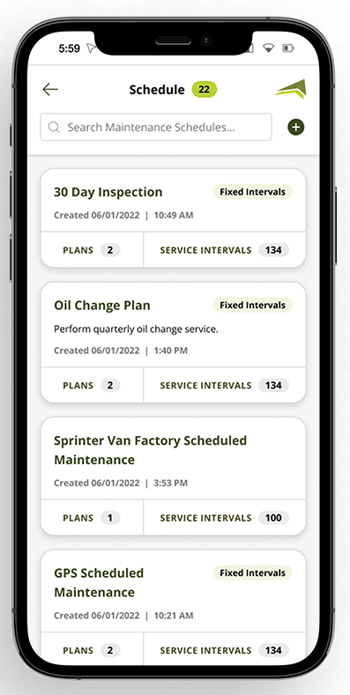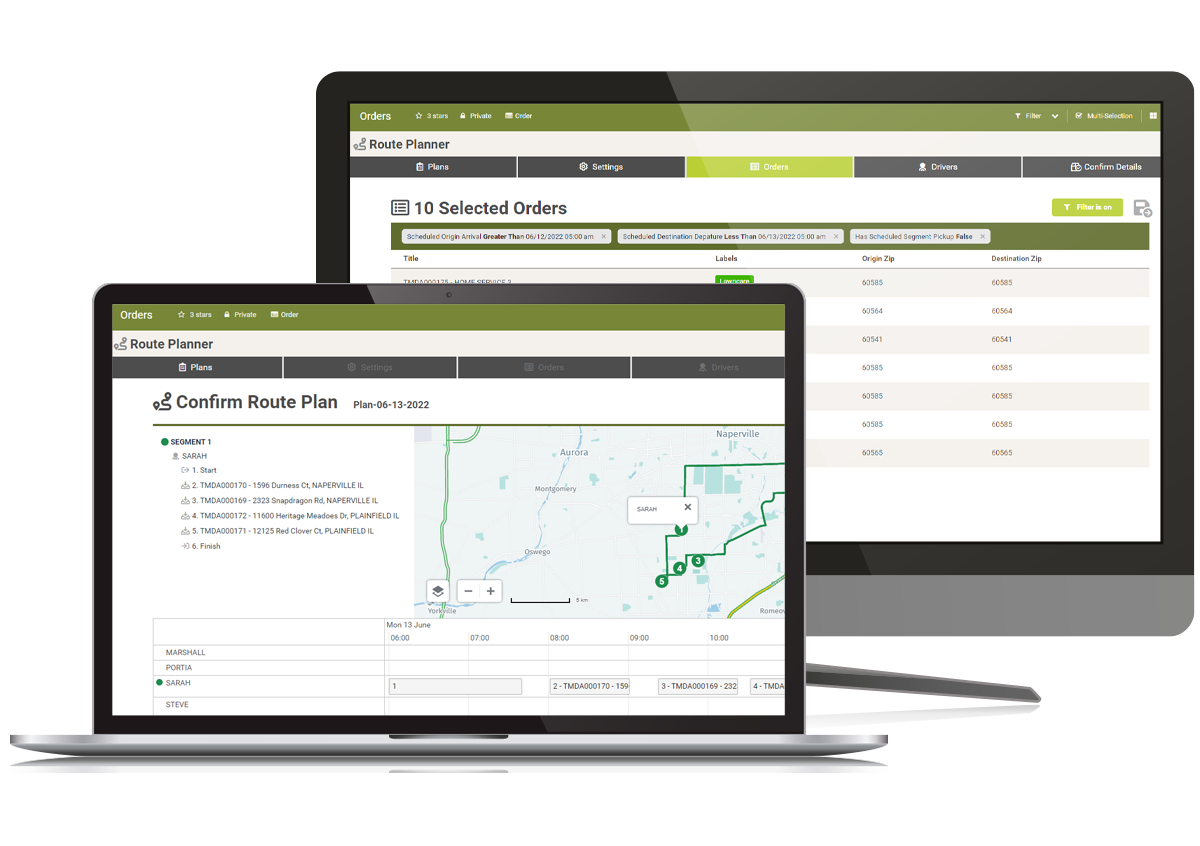In the current war for talent, telematics can help ensure you have the dedicated drivers and technicians you need to keep your fleet moving
In 2022, trucking freight increased by more than 23 percent. This would appear to indicate that the transportation industry is healthy. But as many know all too well, this growth is accompanied by challenges – especially when it comes to who will haul that freight.
Does your company have enough drivers? If so, consider yourself lucky. The transportation industry is in the throes of a talent shortage, and it is projected to get much worse, as estimates show the shortage of drivers will grow over the next decade.
And transportation is just one industry feeling the pain. Service industries are also encountering challenges getting and keeping enough people to keep their fleets fully staffed.
The talent shortage has put additional demands on companies that already have their hands full with serving customers, logistics, regulations, and efficiently and effectively managing their fleets. What’s more, companies understand this business challenge is one they must solve to remain competitive and profitable.
While companies look to woo and keep drivers and techs with higher pay, perks, and benefits, they also should consider the importance of technology and how a powerful telematics system can position them for greater success in winning the war for talent.
The Extent and Cost of the Talent Shortage
The numbers that show a driver shortage are indeed alarming. In 2021, the American Trucking Associations (ATA) reported a shortage of 80,000 drivers, which it said was an all-time high. The ATA also insisted that the shortfall could reach 160,000 by 2030. To close the gap, 1 million new drivers need to be recruited during this decade.
There appear to be multiple reasons for the shortfall, perhaps the largest of which is demographics. The driver workforce is aging, with the average driver age in the mid-to-late-40s and many approaching retirement. In addition, a growing number of drivers of all ages are turned off by the long hours and demands of the job. Meanwhile, efforts to increase the number of women drivers have produced mixed results while young drivers who may be interested in entering the field typically find that the number of driving schools is shrinking, and those that remain can cost $10,000 or more.
All this puts transportation companies in a bind. As a result, they have to pay more for talent, which increases freight costs.
HVAC is one example of a service industry experiencing its own labor shortage when it comes to technicians. According to one estimate, more than 23,000 people a year leave the industry, making it increasingly difficult to fill the huge number of open positions that exists at any given time.
The bottom line: the need for companies to address the talent shortage and keep their fleets rolling has never been greater.
Drivers and Techs Often Leave for More Money…But Not Always
Having enough drivers or technicians, of course, begins with understanding what they want in hopes that your company can provide it. So, what do they want? Driver surveys consistently show they want more money, which is why many employers have increased compensation. Walmart, for instance, recently raised pay significantly for its drivers. Major carriers have also opted to pay their drivers more in hopes of fully staffing their fleets.
But whether you need more drivers or techs, paying more can prove a cost-prohibitive strategy, meaning that not every fleet operator is able to do it. A better way is to differentiate your company as an attractive employer by focusing on other things that drivers’ value, such as the opportunity to work in a team atmosphere, more favorable routes, and better work-life balance.
Also, while you may need to hire new or additional people, don’t forget the importance of keeping the people currently on your payroll. Retaining talent is cheaper than sourcing and hiring new talent. Make your drivers or techs feel valued and maintain open lines of communication to identify those who might consider jumping ship – and work with them to keep them on your team.
How Technology Can Help You Attract and Keep Talent
Telematics can be an incredibly valuable tool for managing your fleet and providing the data and insights needed to make better business decisions. But there are multiple ways that telematics can also help in your efforts to address or avoid a talent shortage.

Providing and maintaining equipment drivers will value. The quality of the trucks and equipment you make available to drivers matters. And while few may cite it as a primary reason they would consider switching employers, it’s an important variable that reflects how much you value drivers and the work they do.
When your vehicles are equipped with telematics devices that are integrated into a robust platform you can, in real time, monitor their status and performance, and track needed maintenance. Some platforms even allow you to upload preventative maintenance schedules for specific vehicles so you know when they need to be serviced.
Automating tasks and reporting. Electronic logging devices (ELDs), which are now required for many trucks, eliminated the once-nettlesome task of keeping a manual logbook. But there may be other tasks you need to look to your drivers to perform, such as inspections, updating routes, and communicating with customers about delivery status or estimated arrival times. Telematics systems can now either automate many tasks like these or make them as simple as a driver tapping a few buttons on a cellphone app.

More efficient routing. Drivers and techs value their time and are not likely to remain loyal to an employer that doesn’t help them make the best use of the hours they spend on the job. Companies understand the cost savings and customer service value associated with using technology to map routes and send the closest vehicles and staff to locations when and where they are needed – and drivers and techs appreciate this efficiency, as well.
The routing and dispatch software functionality in a telematics system makes simple work of efficiency, which, in turn, results in more happy customers, more dollars for the fleet operator, and less likelihood of unwanted overtime for drivers.
Commitment to safety. Keeping drivers and others on the road safe requires a larger effort than many companies realize. A comprehensive safety program will include training, ongoing communication, proper monitoring and maintenance of vehicles and equipment, coaching, and the commitment of everyone, from executives to hourly employers, to maintaining a safety culture.
While a company’s focus on safety may not be what most attracts drivers or techs or encourages them to stay, it will still be important to them. People don’t want safety; they expect it and assume the company will make safety a priority.
Telematics can support safety in multiple ways, from monitoring equipment and managing maintenance to generating driver safety scorecards – an engaging way to “gamify” safety for drivers – to monitoring driver behavior via connected dashcams and sending corrective alerts when unsafe behavior is detected.
Protecting drivers. Connected dashcams are valuable not only for monitoring drivers but for protecting them, as well. Accidents can prove costly to both the company and the individual drivers, who may be cited, accumulate points on their driver’s license, or be included in an expensive lawsuit. Dashcams and related telematics data, such as vehicle speed, can provide invaluable evidence of a driver’s actions behind the wheel in the event of an accident – evidence that can prove the company’s driver wasn’t at fault.
As with safety, drivers and techs expect that their employer will have their back should something go wrong. Telematics helps fleet operators to deliver on this expectation.
Attacking on Multiple Fronts
The talent shortage is as real as it is costly. To address it for your company, you need to attack it on multiple fronts. That includes adopting and utilizing the telematics technology that can help set your company apart as an employer of choice.

